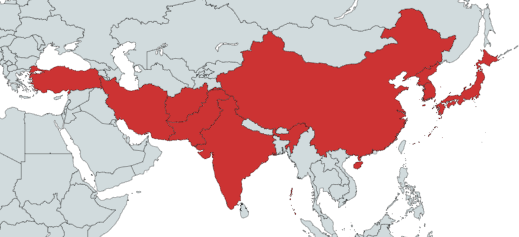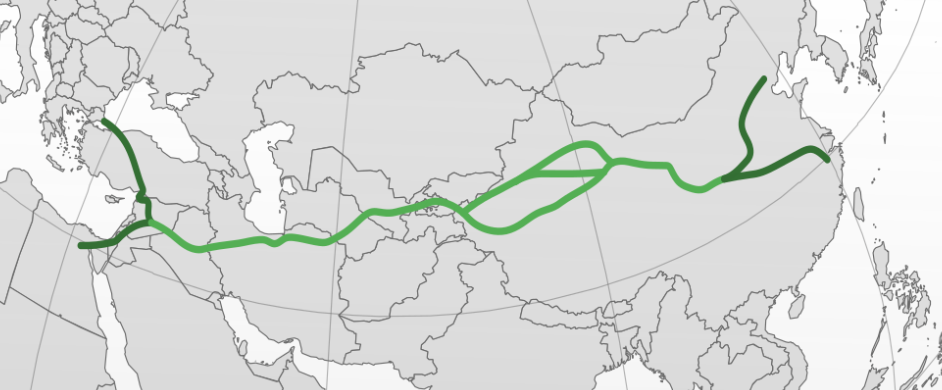(Extracted from a rambling email I sent to Raymond Lee, 22nd Feb 2024.)
To waffle a bit here, and think about a possible nebulous clumping (barely a category) of “1–(9/10)+K” decks, which have 9 or 10 pip cards plus (one or more, but not the full “European” complement of) “top cards” (honours, courts, etc), and usually having some suits reversed in ranking, which is a feature that really stands out. This would seem to relate together members such as:
- Korean Tujeon decs, usually (80 cards) 8× 1–9+K, with half ranking in reverse
- Ganjifa-style decks:
- Moghul Ganjifa decks, usually (96 cards) 8× 1–10+QK, half the suits rank in reverse.
- Dashavatara Ganjifa, usually (120 cards) 10× 1–10+QK, half of the suits rank in reverse.
- Ganjappa, (144 cards) 12× 1–10+QK, half reversed.
- The deck used for Ombre, (40 cards) 4× A–7JQ+K, two suits ranking in reverse, is this inspired by older (non-European) games?
- The “Mamluk” deck, which (if we ignore the added cards, leaving 46 cards) has 1–10+K in most suits, with the cups seeming to have 2 extra cards (compare with the top suit of Chinese money cards?). Two suits rank in reverse order. The deck that we know of has seems to have extra cards added to convert it to a 1–10+JQK format.
- Chinese money-suited decks. These have a “weirder” structure than the other decks but seem to be closely related as well. (Below, C=coins, S=strings (100 coins), M=myriads.)
- As described by Lu Rong (38 cards): 4 suits 1–9C; 1–9S; 1–9M; 20–90M+100M,1000M,MM [although it is possible that his description is incomplete]
- The Madiao deck (40 cards): 9–1,½,0C [reversed]; 1–9S; 1–9M; 20M–90M+100M,1000M,MM
- (Later, but derived) the Kanhu deck drops to three suits (30 cards): 9–1,½,0C [reversed]; 1–9S; 1M-9M+1000M
- (Again, later, derived from Kanhu) the modern 3-suited money deck is (30 cards) 3× 1–9+K. The honour cards are undifferentiated by suit in most games, and often undifferentiated from the 1s.
Similar decks without any reversal in suits, often used for Blackjack/Baccarat-style games (Tujeon also falls into this category, and the games played with it were adopted for use with Hwatu cards). These seem to be descended from the above type of deck by reducing/simplifying them:
- The decks used for Naksha/Naqsh, reduced from ganjifa to usually (48 cards) 4× 1–10+QK (not reversed).
- The so-called “von Hase” deck (40 cards), single suit 4× A-7JQK. This cannot be reversed, so probably is used for similar games as Naqsh/Kabu?
- Perhaps also Japanese Kabu cards, (40 cards) single suit 4× 1–9+J, simplified from four-suited Mekuri decks (in turn from Portuguese decks having 4× 1–9+JCK), but perhaps there is additional (Korean or Chinese?) influence on their construction?
- Japanese Shimafuda, while undoutedly much later, is derived from Merkuri cards but switches the lowest court to a 10, reinventing a structure similar to Ganjifa: 4× 1–10+Q,K
This does seem to give you a mostly-contiguous block of countries which used these kinds of cards: Korea through China, India/Pakistan, (Afghanistan?), Iran, Turkey… Spain. Obviously this is very much hand-waving and ignoring the historical boundaries of empires and so on, but it does align with the path followed by the Silk Road:


It does feel (without any evidence) that the 4-suited versions are older, and the 8+ suits as a (re)duplication of these.
Speculations on links between these decks occur in many of the older issues of IPCS (most prominently in von Leyden’s articles), but without the discovery of any older decks it is hard to claim anything! An un-adjusted Mamluk-style pack would certainly be interesting.